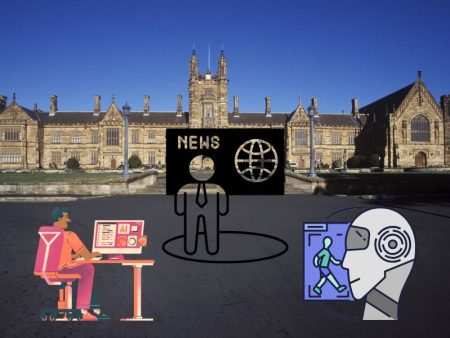So… you finally gave in, huh?
You plugged your first idea into one of those shiny AI copywriting tools and—bam! Out came a sleek, polished paragraph faster than you can say “writer’s block.”
I get it. Been there. It feels like magic.
But here’s the thing nobody tells you while you’re still basking in that dopamine hit of speed and efficiency: AI copywriting can be a seductive little trap. One minute you’re shaving hours off your workday, and the next, you’re publishing lifeless, generic content that barely scratches the surface of what your brand could be saying.
Let’s get real for a sec—AI isn’t evil. (Well, not yet. Looking at you, sci-fi dystopias.) But it’s not perfect either. And if you’re blindly trusting it without understanding the darker side of how it works, you’re setting yourself up for a whole world of cringe.
So, buckle up. Let’s walk through the real talk version of what can go sideways with AI copywriting—and how to dodge those landmines like a boss.
The Frankenstein Content Syndrome
Ever read something and thought, “Wow, this sounds like five different people wrote it while sitting in different countries on a Zoom call at 3 a.m.?” Yeah. That.
AI-generated content often ends up stitched together from a dozen different sources and styles. It’s got no soul. It’s like a conversation where someone keeps switching accents mid-sentence. Confusing. Off-putting. And just weird.
You know what makes people stick around? Voice. Consistency. That “oh-I-know-who-wrote-this” feeling. But AI doesn’t inherently understand your tone, your quirks, your sass or sarcasm. It mimics, at best. And mimics badly, at worst.
Quick Fix: Instead of letting AI dictate your tone, feed it your voice. Use AI as a brainstorming buddy, not a ghostwriter. Better yet, run your draft through and then rewrite in your own words. Keep it real. Keep it you.
Over-Optimization Overkill
Here’s the sad irony. The more we try to hack Google’s algorithm with keyword stuffing and SEO “tricks,” the more human readers bounce. Hard.
AI loves a good keyword. Too much, actually. It’ll jam that sucker in every other sentence if you don’t reign it in. The result? Content that ranks okay but reads like a malfunctioning ad from 2004.
Also—real talk again—humans are smarter than bots when it comes to BS detection. If you’re writing solely to please search engines, your readers can feel it. And they’ll leave faster than you can say “bounce rate.”
Solution? Use SEO as seasoning, not the main dish. Ask yourself: would you read this if you weren’t paid to? If not, tweak it. Talk like a human. Not a robot trying to woo another robot.
The Blandpocalypse
You know that AI-generated sentence that goes something like:
“In today’s fast-paced digital landscape, businesses need to leverage cutting-edge solutions to stay ahead of the curve.”
Snore.
I’m sorry, but if I read that line one more time, I might start throwing my coffee at my screen.
That’s the problem. AI loves safe, clean, flavorless language. It plays it way too safe. It’ll never take a creative risk, drop an F-bomb (unless you tell it to), or make a bold claim without hedging like a nervous intern in a job interview.
Your audience doesn’t want that. They want spicy. Honest. Relatable. Flawed but fearless.
The Fix: Don’t just accept the first draft. Inject some life. Use slang. Ask real questions. Challenge the reader. Make them feel something—even if it’s discomfort. Especially if it’s discomfort.
Lack of Emotional Intelligence (Spoiler: It’s Not Just You)
Here’s where things get murky. AI doesn’t feel. Like, at all. It can mimic empathy, sure. It can regurgitate phrases like “we understand your struggles” and “we’re here for you.” But does it get grief? Joy? Frustration? Anxiety about bills? The raw panic of launching a business alone?
Nope.
This is especially dangerous if you’re writing for sensitive topics—mental health, relationships, parenting, trauma. AI can say the “right thing,” but it often misses the right tone.
And tone? That’s where trust lives.
One misstep and you’re not just losing a reader—you’re hurting someone. That’s not okay.
Pro Tip: If you’re using AI to draft emotionally complex content, follow it with a human gut-check. Better yet, rewrite it yourself with lived experience. Authenticity can’t be outsourced.
Echo Chamber Content
AI tools are trained on existing data. Which means they’re basically recycling what’s already been said. Over and over. Ad nauseam.
So if you ask your AI buddy to write a blog about “email marketing tips,” you’ll get the same tired advice that’s been regurgitated a thousand times: segment your list, personalize your subject lines, blah blah blah.
Is it wrong? No. Is it new? Not even close.
You want your content to stand out? Then don’t just settle for what’s already out there. Push further. Add your opinion. Challenge the status quo. Say something slightly controversial. Be brave.
Also—try running your prompt through a more conversational, nuanced tool like an AI Writing Assistant that allows you to direct tone and context more precisely. Not all AI tools are created equal. Some are just better co-writers than others.
The “Set It and Forget It” Trap
Look, I get it. Automation is so tempting. Schedule a week’s worth of AI-written blogs, queue them up, and call it a day. But here’s the kicker—marketing is a conversation. Not a monologue.
And AI? It’s not great at reading the room.
Your content should evolve. React. Pivot. If something big happens in your industry—or, you know, in the world—you need to respond in real time. A blog post written three weeks ago by a bot won’t cut it.
Reality check: Even AI-assisted content needs ongoing human attention. You’re not just publishing. You’re listening, adjusting, engaging. Don’t ghost your own brand.
No Soul, No Story
Here’s something wild. One of my most successful blog posts started with a story about my dog eating my client’s flash drive back in 2010. Completely irrelevant to marketing—but human, funny, and unexpected.
And guess what? That’s what people remember.
AI doesn’t do non-linear storytelling well. It likes structure, logic, neat paragraphs. But storytelling isn’t neat. It meanders. It pauses. It sidetracks. And that’s what makes it beautiful.
If your copy doesn’t make someone feel like they’re sitting across from you at a coffee shop—laughing, nodding, thinking—then you’re not connecting. And AI can’t force that. Only you can.
Data Dependency and Originality Drain
Everything AI writes is based on existing data. That’s both a strength and a limitation. If your industry’s saturated with similar voices and viewpoints, AI will reflect that—sometimes too much.
You may accidentally plagiarize without knowing it. Or worse, you’ll just sound like everybody else. The originality? Gone.
Here’s a trick I swear by: write your first draft from the gut. Only then bring AI in to help refine, expand, or challenge it. Flip the process. Let your brain lead.
Because honestly? You’ve got more to say than you think.
Wrapping It Up: A Love Letter and a Warning
Look, I’m not here to cancel AI copywriting.
I use it. I love it. I geek out over how fast it helps me brainstorm or how it smooths out clunky phrasing when I’m three coffees deep and writing like a raccoon in a garbage bin.
But I also know it’s not a crutch. Or a replacement for real voice, real risk, and real human connection.
Use AI as a tool, not a shortcut.
Your voice, your story, your vulnerability—that’s what makes your content unforgettable. AI can help you shape it, sure. But it’s still your job to breathe life into the words.
So keep writing weird, flawed, brave things. Make people feel stuff. Make them stop scrolling. That’s how you win.
And hey—if you ever feel like your copy’s starting to sound like a stock photo looks? Step away from the bot. Go outside. Live a little.
Then come back and write like someone who’s been through some stuff.
Because that’s what your audience really wants.
P.S. What AI writing disasters have you witnessed lately? Drop ’em in the comments—I need a laugh.
Or a cry.
Maybe both.


